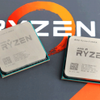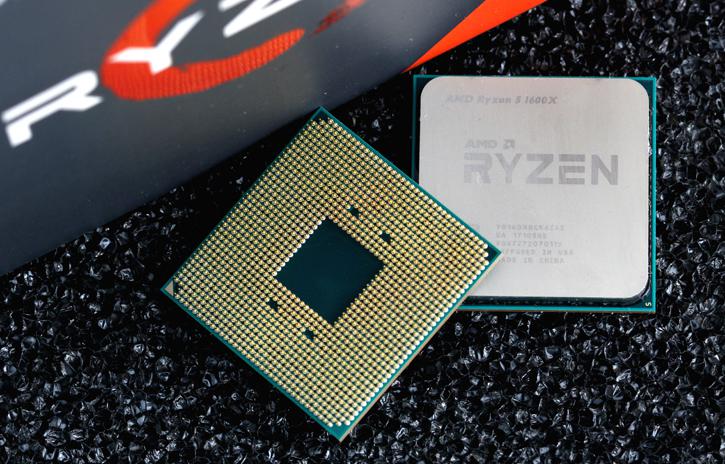Introduction
AMD Ryzen 5 1500X & 1600X
More value with AMD's Quad and Six-core processors.
We review Ryzen 5 in this article. AMD submitted two processor samples, the quad-core 1500X and six-core processor 1600X. The new processors will be close in relative performance compared to Intel's Core i5 series. AMD however is going in with one leg stretched as they offer that six-core part at 249 USD and the quad-core processor at 189 USD.
The new SKUs are not clocked slow either, the Ryzen 5 1600X six-core processor is clocked as fast as its bigger eight-core brother at a 3.6 GHz base clock and 4.0 GHz Turbo. The quad-core 1500X on its end has a base frequency at 3.5 GHz and 3.7 on that Turbo. Now, before we get into detail, under the hood (that would be a euphemism for heat-spreader) these processors are ALL 8-core parts (physically). Yet they have been sorted and reconfigured. That quad-core in reality is the 8-core part yet set up and enabled in a 2+2 fashion, thus each out of the two 4-core clusters (CCXs) has 2 cores enabled. For the six-core parts that means per 4-core cluster (CCX) one core is disabled and that means these processors are set up in a 3+3 fashion. Other than that, again these are physically the 8-core Summit Ridge parts. That also invokes corresponding caches, TDPs and yes, these processors are all threaded and multiplier unlocked as well. The 1600X will have a 95W TDP, the 1500X sits at 65 Watts. According to AMD, Ryzen 5 1600X will be competing with the Intel Core i5 7600K and the Ryzen 5 1500X is attacking the price and performance bracket of the Core i5 7500.
Before we start-up the review, there has been a lot of chatter on the web on 1080p game performance, CCX interlink latency and bandwidth and/or clock frequencies being responsible and so on. The fact is that week after week Ryzen processor performance has been increasing thanks to BIOS updates and software optimizations. Pair it with good and reasonably fast memory (say 2933 MHz) and you will have a kick-ass value processor. Many of you have been following the news on memory latency. A new BIOS (AGESA 1004 based firmware) update ensures better performance and takes a notch of memory latency. We have been testing with this update and can confirm a drop in that memory latency and thus the overall performance. We'll show you that later on in the article.
Ryzen 5 processors offer more value, as such we have been testing and benchmarking these parts based on nothing more than a very affordable Gigabyte B350 motherboard with that AGESA 1004 updated BIOS. Combined with some good memory the performance is there. From this day on we will also test Ryzen at 2933 MHZ or, if the platform supports it, 3200 MHz as yes, the symbiosis in-between Ryzen and higher-frequency memory is a very important factor to weigh in to your purchasing decisions.
Ryzen - much like the competition, AMD is now selling Ryzen in product stacks, low-end, mid-range and high-end much like Intel's Core i3, i5 and i7 series. Earlier on referred to as SR7, SR5 and SR3, matching up with Summit Ridge (SR) and thus a performance segment denominator. But then Summit Ridge from the new Zen architecture was named Ryzen, and hence one more change in naming has now been made. You will spot Ryzen series 3, 5 and 7 processors. It’s plain and simple, and as always that works out the best to understand product positioning compared to the Intel line-up. We’ll go into more detail on the next few pages, of course. The Ryzen series 5 processors are four- and six-core processors at attractive pricing combined with a nice IPC increase over the last generation products. Overall we have lots to talk about and to look at, let’s start up the review shall we?


